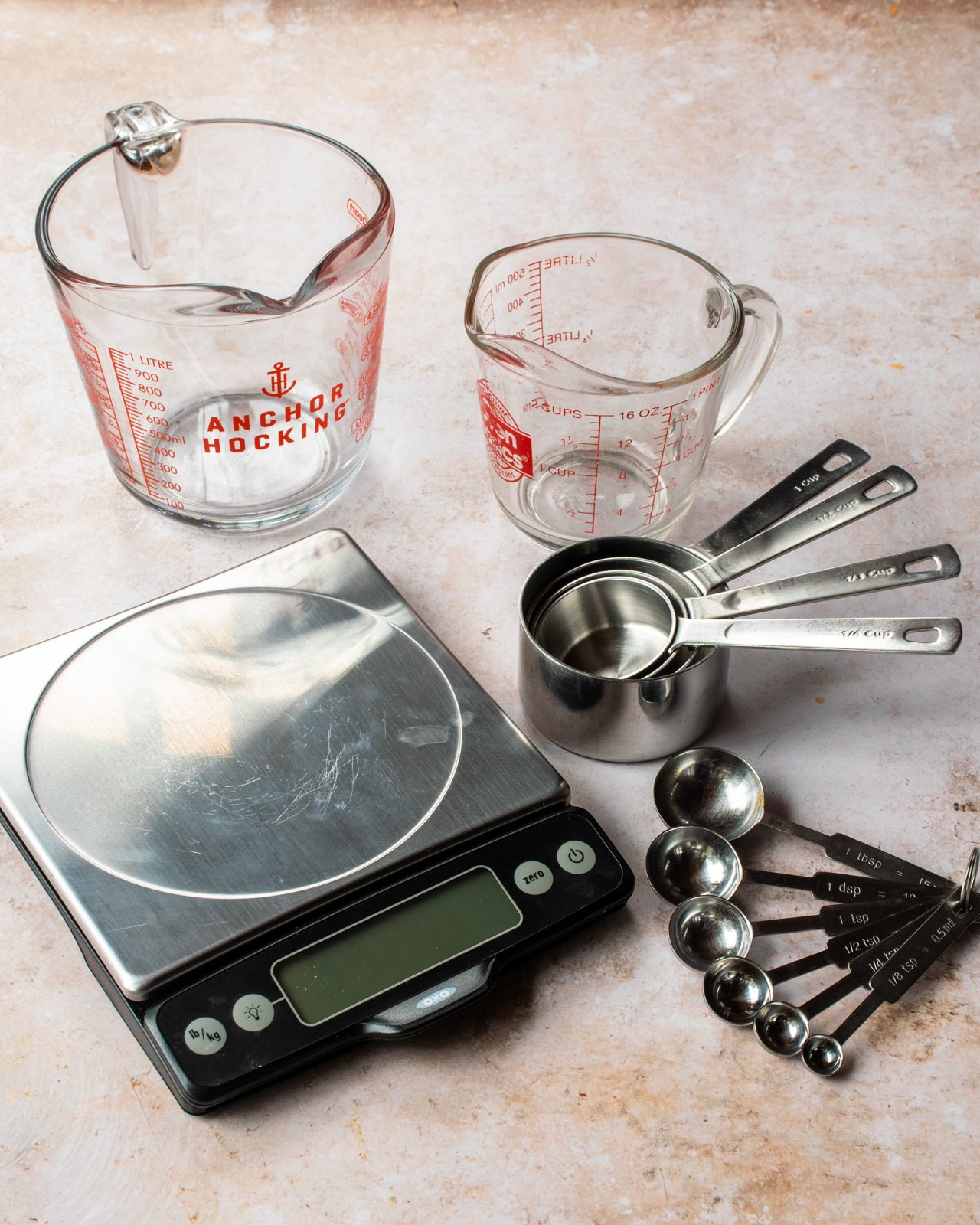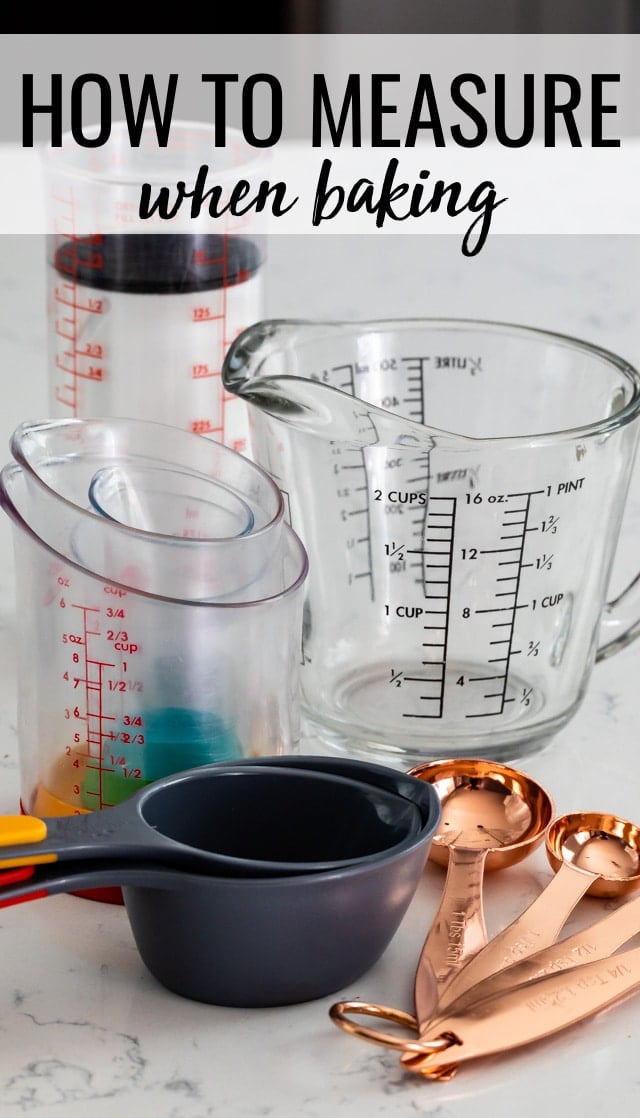The best way to measure ingredients with a measuring jug is to use proper techniques. Ensure accuracy by following a few simple steps.
Measuring ingredients precisely can make or break your recipe. A measuring jug is a versatile tool that can help you get the right amounts of liquids and even some dry ingredients. But, how do you use it effectively? Understanding the proper methods can improve your cooking and baking results.
In this post, we will explore the best practices for using a measuring jug. These tips will help you achieve accuracy and consistency in your kitchen. Ready to master the art of measuring with a jug? Let’s dive in!

Credit: bluejeanchef.com
Choosing The Right Measuring Jug
Using a measuring jug ensures accurate ingredient amounts for recipes. Choose one with clear markings for precise measurements. Opt for a jug with a spout to avoid spills.
Hey friends! If you’re like me, you know that measuring ingredients correctly is super important for cooking and baking. A little too much or too little can make a huge difference. So, how do you pick the right measuring jug? Let’s dive in and find out.Material Matters
First things first, the material of your measuring jug can make a big difference. Here’s a quick guide to help you choose: – Plastic: Light and often cheap. Great for everyday use but can get scratched easily. – Glass: Durable and doesn’t retain odors. Perfect for hot liquids but can break if dropped. – Stainless Steel: Very sturdy and long-lasting. Ideal for all types of liquids but can be a bit heavy. I remember when I first started baking. I used a plastic jug that got scratched and cloudy over time. Switching to glass made measuring so much easier and more accurate.Size And Capacity
Next, consider the size and capacity of the jug. This is super important because using the wrong size can mess up your measurements. Here’s what to look for: – Small (250ml to 500ml): Perfect for small recipes or when you need to measure small amounts. – Medium (1 liter): Great for everyday cooking and baking needs. – Large (2 liters or more): Ideal for big batches or when you’re cooking for a crowd. Think about what you usually cook. For example, if you often make soups or big batches of cookies, a larger jug might be best. On the other hand, if you’re just measuring milk for your morning coffee, a smaller jug will do the trick. Here’s a quick table to sum it up:| Jug Size | Best For |
|---|---|
| 250ml – 500ml | Small recipes, precise measurements |
| 1 liter | Everyday cooking and baking |
| 2 liters or more | Big batches, large recipes |
Understanding Measurement Units
Hey friends, today we’re diving into something really important for all you home cooks out there – measurement units. When using a measuring jug, knowing these units can make all the difference. Trust me, I’ve had my fair share of kitchen mishaps because I didn’t pay attention to them. Let’s make sure that doesn’t happen to you!
Metric Vs. Imperial
First things first, let’s talk about the two main systems: Metric and Imperial. If you’re like me, you’ve probably seen recipes that use both. It can be confusing, right?
- Metric – This system uses liters (L) and milliliters (mL). It’s common in most countries around the world.
- Imperial – This one uses pints, quarts, and fluid ounces. It’s mainly used in the United States.
Knowing which system your recipe uses is key. Imagine trying to make a cake and using the wrong measurements. Not fun!
Common Conversions
Now, let’s talk about conversions. Sometimes, you have a recipe in one system, but your measuring jug uses another. Don’t worry, I’ve got you covered.
Here are some common conversions to help you out:
| Metric | Imperial |
|---|---|
| 1 liter (L) | 34 fluid ounces (fl oz) |
| 500 milliliters (mL) | 17 fluid ounces (fl oz) |
| 250 milliliters (mL) | 8.5 fluid ounces (fl oz) |
Keep this table handy. It’ll save you a lot of stress in the kitchen.
So there you have it, folks. A quick guide to understanding measurement units. The good news? Once you get the hang of these, cooking becomes a lot easier. Happy cooking!
Preparing Ingredients For Measurement
Preparing ingredients accurately is crucial for any recipe. Measuring with a jug ensures consistency and precision. Knowing how to prepare ingredients for measurement can make a difference in your cooking or baking results.
Dry Vs. Liquid Ingredients
Understanding the difference between dry and liquid ingredients is essential. Dry ingredients include flour, sugar, and spices. Liquid ingredients include water, milk, and oils. Each type of ingredient requires a different measuring technique.
For dry ingredients, use a measuring jug with clear, easy-to-read markings. Gently spoon the ingredient into the jug. Avoid packing it down. For liquid ingredients, pour them into the jug while keeping it on a flat surface. Check the measurement at eye level to ensure accuracy.
Properly Leveling Ingredients
Proper leveling is key for precise measurements. For dry ingredients, use a straight edge to level off the excess. This ensures you have the exact amount needed.
For liquids, ensure the jug is on a level surface. The liquid should settle evenly. Check the level at eye height. This avoids over or under-measuring.
By preparing ingredients correctly, you achieve the best results in your recipes. Accurate measurements lead to consistent and delicious outcomes.

Credit: happyhealthy.extension.msstate.edu
Accurate Measuring Techniques
Accurate measuring techniques are crucial in cooking and baking. This ensures consistent and delicious results. Using a measuring jug correctly can make a big difference. Here are some essential tips to measure ingredients accurately with a measuring jug.
Reading The Meniscus
Reading the meniscus is vital for precise measurements. The meniscus is the curve seen at the liquid’s surface. Always read the measurement at eye level. Focus on the bottom of the meniscus. This ensures you get the correct amount of liquid. Avoid looking at the jug from above or below.
Avoiding Air Bubbles
Air bubbles can affect the accuracy of your measurements. They create gaps and make the liquid seem more than it is. To avoid air bubbles, pour the liquid slowly into the jug. Give the jug a gentle tap to release trapped air. Wait a few seconds before taking the final reading.
Tips For Measuring Sticky Ingredients
Hey there! We all know measuring sticky ingredients can be a bit tricky. From honey to peanut butter, these sticky substances love to cling to everything. But don’t worry! I’ve got some simple tips to help you measure sticky ingredients like a pro.
Using Non-stick Sprays
One of the easiest ways to handle sticky ingredients is by using non-stick sprays. Here’s how you can do it:
- Grab your measuring jug.
- Spray the inside with a light coat of non-stick spray. Tip: Make sure to cover all sides.
- Now, pour your sticky ingredient, like honey or syrup, into the jug.
- Watch how easily it slides out when you pour it into your mixing bowl!
This method works well for other sticky ingredients too, like molasses or agave nectar. It makes the process cleaner and saves you time on washing up.
Alternative Methods
If you don’t have non-stick spray, don’t worry. There are other ways to measure sticky ingredients efficiently.
- Using Oil: Lightly coat your measuring jug with vegetable oil. This works similarly to non-stick spray.
- Hot Water Trick: Fill your jug with hot water and let it sit for a few minutes. Pour out the water and quickly add your sticky ingredient. The heat helps it slide out easier.
- Spoon and Spatula: Use a silicone spatula to scrape out every last bit of the ingredient from the jug.
Personally, I prefer the non-stick spray method. It’s quick and doesn’t add any extra flavors to your ingredients. But hey, try out the different methods and see what works best for you!
So, next time you’re baking cookies or making a sweet sauce, remember these tips. You’ll find measuring sticky ingredients much less of a hassle. Happy cooking!
Cleaning And Maintaining Your Measuring Jug
Keeping your measuring jug clean and well-maintained ensures accurate measurements. It also extends the life of the jug. Proper care helps avoid cross-contamination. Let’s dive into some essential tips for cleaning and storing your measuring jug.
Cleaning Tips
Always wash your measuring jug after each use. Use warm soapy water. This helps remove any residue. For stubborn stains, a mixture of vinegar and baking soda works well. Avoid using abrasive sponges. These can scratch the surface. Rinse thoroughly to remove all soap.
For dishwasher-safe jugs, place them on the top rack. This ensures a gentle wash. Check the manufacturer’s instructions if you are unsure. Dry the jug completely before storing. This prevents mold and bacteria growth.
Proper Storage
Store your measuring jug in a cool, dry place. Avoid direct sunlight. This can cause discoloration. Keep it away from high heat. Heat can warp plastic jugs. If the jug has a lid, store it with the lid off. This allows air circulation. It also prevents unpleasant odors.
Stack jugs only if they are designed for it. Improper stacking can lead to cracks. Place the jug on a flat surface. This prevents tipping and spilling. Keep it within easy reach. This encourages regular use and proper care.
Common Mistakes To Avoid
Measuring ingredients with a jug seems simple, but many make mistakes. These errors can affect your recipes. Let’s explore common mistakes to avoid.
Overpacking Ingredients
One common mistake is overpacking ingredients. This happens when ingredients are packed tightly into the jug. Overpacking can lead to inaccurate measurements. Use a gentle hand. Avoid pressing ingredients down. This ensures you get the correct amount.
Ignoring Temperature Effects
Temperature can change ingredient volume. Cold ingredients might shrink. Warm ingredients might expand. These changes can alter your measurements. Use room temperature ingredients for accuracy. This helps maintain consistency in your recipes.

Credit: www.crazyforcrust.com
Advanced Tips And Tricks
Measuring ingredients accurately is crucial for successful recipes. Using a measuring jug can make this task easier and more precise. Let’s explore some advanced tips and tricks to get the best results.
Using Multiple Jugs
Using multiple jugs can save time and prevent cross-contamination. Assign each jug to a specific ingredient type. Use one for liquids, another for dry ingredients, and a third for sticky substances. This method keeps ingredients separate and accurate. For large recipes, multiple jugs ensure measurements stay precise.
Pre-measuring Ingredients
Pre-measuring ingredients can streamline your cooking process. Measure all ingredients before starting your recipe. This avoids interruptions and ensures smooth cooking. Use labeled containers or bowls to hold pre-measured ingredients. This keeps your workspace organized and efficient.
Frequently Asked Questions
How Do You Use A Measuring Jug Accurately?
To use a measuring jug accurately, place it on a flat surface. Read the measurement at eye level. Pour slowly to avoid overfilling. Use the correct scale for the ingredient. Clean the jug after each use.
How Do You Accurately Measure Liquid Ingredients In A Jug?
To measure liquid ingredients accurately, place the jug on a flat surface, pour slowly, and check at eye level. Use marked measurements on the jug.
What Is The Most Accurate Way To Measure Ingredients?
Use a digital kitchen scale for the most accurate measurement of ingredients. Weighing ensures precision and consistency.
Is 1 Cup Dry The Same As 1 Cup Liquid?
No, 1 cup dry is not the same as 1 cup liquid. Dry and liquid ingredients measure differently due to density.
Conclusion
To measure ingredients accurately, always use a measuring jug. Ensure your jug is clean and dry. Place it on a flat surface. Pour liquids up to the marked line. For dry ingredients, level them off with a flat edge. Precision ensures great cooking results.
Follow these steps for consistent success in the kitchen. Happy cooking!
